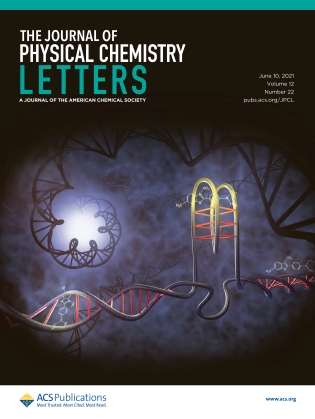Lasing in biological materials as a structure-sensitive research tool
2021-06-22
A team of scientists from the Ultrafast Processes Laboratory at the Faculty of Physics of the University of Warsaw, supported by a researcher from the Chalmers University of Technology (Sweden), showed how to detect changes in the DNA structure using all-optical methods based on the emission of light. This was achieved by time-resolved measurements of the intensity of light emitted by an organic dye bound to the studied material after it was excited by a short pulse of laser light and by using the phenomenon of light amplification in a medium excited by a strong laser pulse. A paper describing these experiments found its way to the cover of one of the leading magazines in the field of physical chemistry, The Journal of Physical Chemistry Letters.
Scientists from the Ultrafast Processes Laboratory (UPL) develop methods for studies of the structure of biological materials at the molecular level using visible light. These methods are based on two phenomena: first, certain organic molecules excited by absorption of a photon release the excitation energy (relax to the ground state) with the rate that depends not only on the properties of the molecules themselves, but also on their environment. Molecules of Thioflavin T, an organic dye used in the studies published in The Journal of Physical Chemistry Letters have such a property. Moreover, they readily bind to DNA molecules. In the published work it has been demonstrated that by studying the relaxation rate of Thioflavin T molecules after their excitation with short pulses of laser light, one can obtain information about the structure of the DNA they are bound to.
The second effect used in the works carried out in UPL is the amplification of light in the process of stimulated emission. Stimulated emission is the phenomenon underlying the operation of the laser: a photon interacting with an optically excited molecule can stimulate the emission of another, identical photon. As a consequence, in a strongly excited medium (in which there are more molecules in the excited state than in the ground state), an avalanche light amplification can take place. When the amplified light comes from the spontaneous emission of photons by molecules in the same medium, the amplified spontaneous emission (ASE) is generated. If the medium is heterogeneous, i.e. it scatters light (like biological materials), the properties of ASE (intensity, spectrum) depend on the paths traversed by photons in the medium, and these are related to the structure of the material. If the efficiency of energy relaxation processes in light-amplifying molecules is also related to the structure of the material (like in the case of Thioflavin T), then – due to the combination of all the effects – the properties of ASE may show a very strong dependence on the material structure.
Studies on applications of the amplified spontaneous emission in biological materials carried out in LPU concern not only the DNA structure but also the mechanisms of protein aggregation that lead to the formation of toxic aggregates, the so-called amyloids, which are responsible for a number of diseases including neurodegenerative diseases such as Alzheimer's and Parkinson's.
For more information, please contact Piotr Hańczyc or Piotr Fita from the Ultrafast Processes Laboratory.
During summer holidays, it will be possible to do a student internship (with a scholarship) related to the research on the topics presented above. Interested students should contact Piotr Hańczyc.
RELATED PUBLICATIONS:
- P. Hanczyc, P. Rajchel-Mieldzioć, B. Feng, P. Fita, Identification of Thioflavin T Binding Modes to DNA: A Structure-Specific Molecular Probe for Lasing Applications, J. Phys. Chem. Lett. 2021, 12, 5436–5442
- P. Hanczyc, M. Procyk, C. Radzewicz, P. Fita, Two-photon excited lasing of Coumarin 307 for lysozyme amyloid fibrils detection. J. Biophotonics 2019, 12, e201900052






